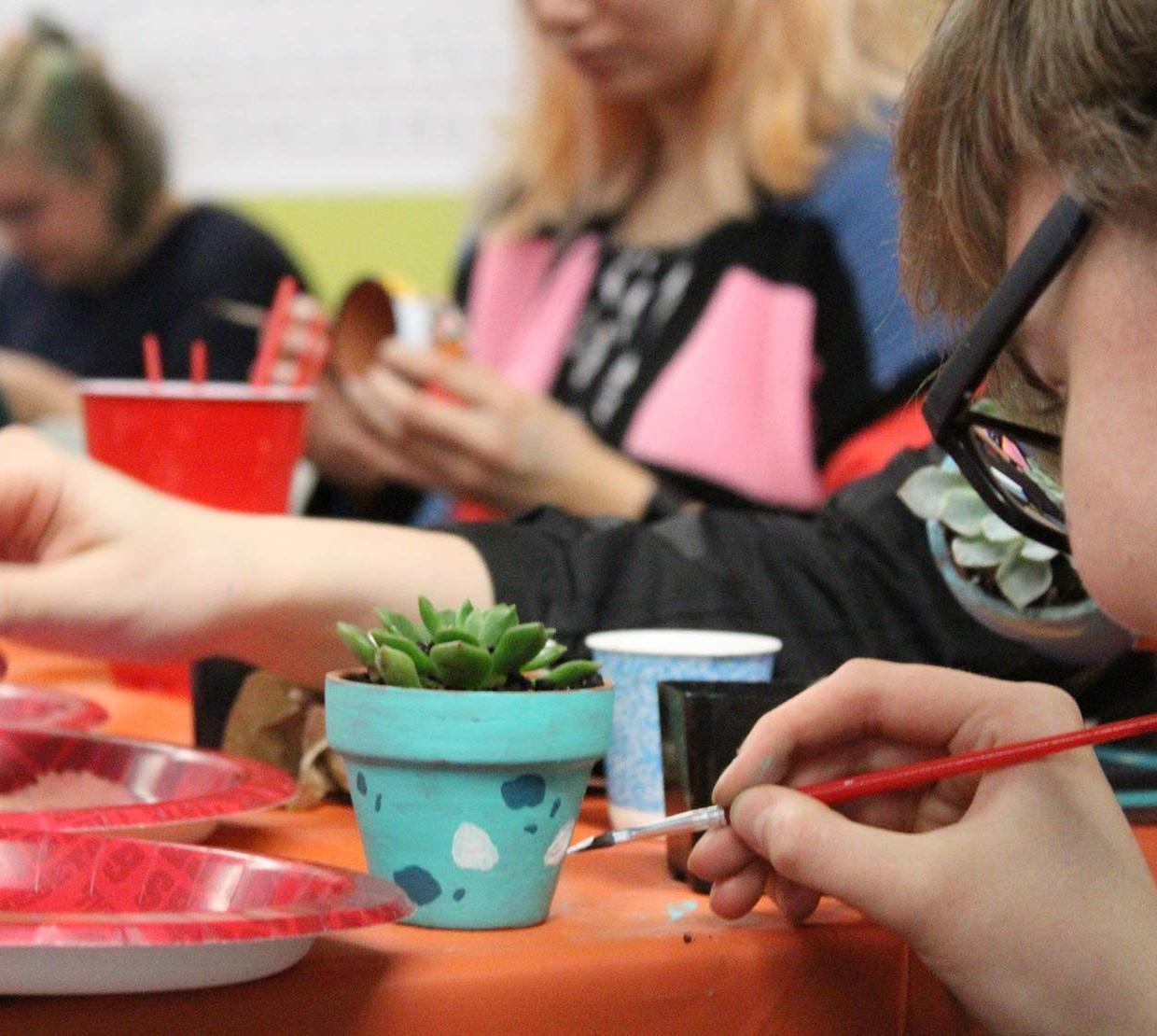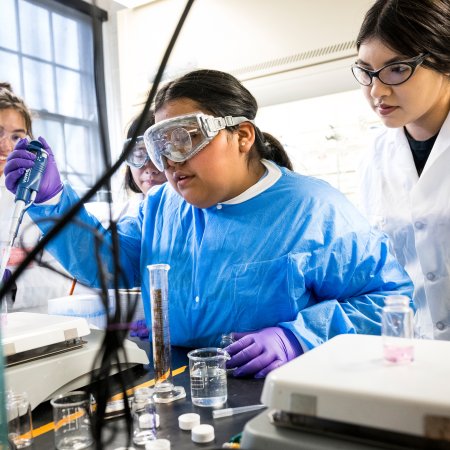Stress-related mental health disorders are growing across campuses nationwide, and Oregon State University and the College of Science are committed to doing what they can to help. An American College Health Association report released in 2011 states that anxiety and depression are among the top impediments to academic performance. The College is taking concerted action to increase support and outreach for science students to reduce anxiety and stress associated with events such as final exams.
Every year the College’s Science Success Center hosted a study break for students before final exams, but this year they ramped up and hosted the de-stress event, “Finals Succ(ulents).” Over a hundred science students filled the center and enjoyed hot cocoa, tea and biscuits while unleashing their creative side and painting a pot for one of the 100 succulents.
Wellness Agents and staff from the Science Success Center were on hand to share tips with students to help them manage their time and stress levels.
This is the first event featuring succulents, but it was highly successful and is sure to become a tradition in years to come. When emails announcing the event were sent out, every one of the succulents was accounted for in an hour. Even more students attended to share in the positive atmosphere.
Earlier fall term, the College of Science hosted its first Destress Fest for Midterms that drew over 300 students to the October 25 event to see therapy dogs, color and eat nachos in the Science Success Center.
“The atmosphere was really positive — food, dogs and art always help people relax,” explains Allie Zinn, a biology major and peer advisor who attended the event.
Oregon State has also worked to increase the number of campus and faculty events designed to help students minimize stress. Events such as these are particularly relevant in a world where increasingly disturbing mental health statistics are becoming commonplace.
The Oregon State Counseling And Psychological Service (CAPS) offers a crisis hotline for students at immediate risk, and provides an online screening for students concerned that they might have a mental health disorder. Students can also make an appointment with CAPS to receive free counseling on campus. They also give students a list of resources to help them manage stress.
Researchers from Columbia University found that over one-third of first-year college students from eight countries screened positively for a mental health disorder. Anxiety and depression were by far the most prevalent, a trend that has been on the rise in recent years. Data from the American College Health Association (ACHA) show that nearly one in six college students has been diagnosed with or treated for anxiety, while 21.9 percent have said that it has affected their academic performance.
Although there are many conflicting explanations, most scientists agree that the growing anxiety reflects the changes our society has been experiencing as we transition into an increasingly technological age. As information and resources become more readily available, students are less accustomed to waiting. They are used to instantaneous feedback, so waiting for an exam to be graded or a text response creates what is called anticipatory anxiety.
The pervasiveness of social media is also a major contributor to the growing rates of depression and anxiety. Students are increasingly disconnected from the here and now, and instead live in an Instagram reality where there are impossible expectations set for appearance and lifestyle. Inadequacy is a huge source of emotional turmoil. The ACHA report finds that nearly 86 percent of total college students surveyed reported feeling overwhelmed, and almost half describe feelings of hopelessness.
Lawnmower parents
Perhaps the most significant change that many educational facilities are noticing is in parenting styles. Last August, an essay written anonymously by a high school teacher went viral, and the term “lawnmower parents” was born. A well-meaning, but even more harmful successor to “helicopter parents,” lawnmower parents “go to whatever lengths necessary to prevent their children from having to face adversity, struggle, or failure,” the essay states. Rather than let children confront challenges on their own, they mow down any obstacles in their path. When students are taught that they are incapable of failure, or that there is always another person to blame, college can come as a harsh reality check, one for which they are often unprepared.
Data from the Higher Education Statistics Agency in Great Britain showed a record number of college students with mental health problems dropping out of college in 2014-15, tripling the numbers from 2009-10. Unfortunately, this is a growing trend worldwide. Research shows a clear association between mental health problems and lower academic performance.
Oregon faces steeper challenges
Universities across the nation are becoming increasingly aware that it is critical to tackle these obstacles to student success. Unfortunately, the state of Oregon faces steeper challenges than most.
In 2017, Mental Health America determined that Oregon has a higher prevalence of mental health disorders than any other state in the country, though the state has been doing what they can to help mitigate the problem. The high rates of mental illness in the state are partly due to the changing perspectives on mental health, particularly in Oregon. Oregonians were more likely than nearly any other state to agree strongly that treatment can help people with mental illness lead normal lives, which could partly account for the higher response.
All of these factors have contributed to an exponential rise in mental health services on college campuses. Universities have reported that utilization of mental health services is increasing five to seven times faster than enrollment over the past seven years.




